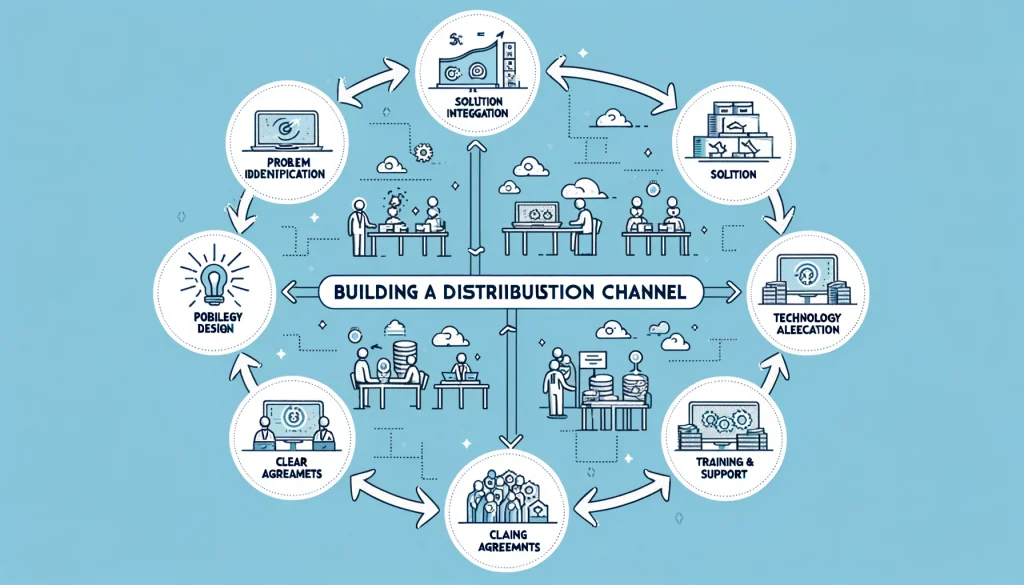
In the dynamic world of small and medium enterprises (SMEs), simplicity can be the key to success, particularly when it comes to building effective distribution channels. The essence of business lies in solving problems efficiently, and overcomplicating the process can hinder progress and growth. Let’s delve into how simplifying business processes, especially in the realm of distribution, can lead to significant advantages for SMEs in the Indian market.
Think in Problems, Solve in Products
At the core of every business is a simple equation: Business = Solving a Problem. Identifying and addressing a problem effectively can pave the way for creating a successful product or service. The process begins with recognizing the problems that you or others have faced and solved.
For instance:
- Wealth: Managing personal finance, buying a house, or making investments.
- Health: Losing weight, gaining muscle, or starting a new diet.
- Relationships: Overcoming a break-up/divorce or making new friends.
These problems, once significant hurdles in life, were resolved through learning new skills and overcoming limiting mindsets. Similarly, many potential customers face problems that you have already solved. This makes your target customer someone who is where you were a few years ago.
Simplifying Distribution Channel Building
- Identify the Problem:
- The first step in building a distribution channel is to identify the specific problem your product or service solves. This clarity helps in creating a focused strategy.
- Design Simple Solutions:
- Simplify your processes. Avoid overcomplicating distribution strategies with excessive layers or steps. A streamlined approach not only saves time and resources but also enhances efficiency.
- Leverage Technology:
- In today’s digital age, technology plays a crucial role in simplifying distribution. Utilize online platforms to connect with distributors, automate inventory management, and streamline order processing. Technology bridges the gap between offline activities and the convenience of online interactions.
- Select the Right Channel Partners:
- Choosing the right partners is crucial. Look for partners who understand the market, have a good network, and share your business values. A simple yet thorough selection process can prevent future complications.
- Create Clear Distribution Agreements:
- Drafting straightforward distribution agreements can prevent misunderstandings and disputes. Ensure that all terms, conditions, and expectations are clearly outlined and agreed upon by both parties.
- Focus on Training and Support:
- Providing training and support to your distribution partners ensures they understand your product and processes. Simplified training modules can make this process more effective and less time-consuming.
Case Study: Simplifying Distribution in the Indian Market
Consider the case of an SME in the Indian market aiming to distribute organic health products. The company identified a growing demand for organic products but noticed that potential customers struggled to find reliable sources. Here’s how they simplified their distribution process:
- Problem Identification:
- They pinpointed the problem: lack of easy access to quality organic products.
- Solution Design:
- They created a simple distribution model focusing on key urban centers with high demand.
- Technology Integration:
- They developed an online platform where customers could easily order products, and distributors could manage their inventory and orders.
- Partner Selection:
- They selected partners with experience in health product distribution and a strong local presence. They consulted a popular online distribution platform for distributors, wholesalers and super stockists.
- Clear Agreements:
- They drafted clear, concise distribution agreements with well-defined roles and expectations.
- Training and Support:
- They provided training on product knowledge and the online platform, ensuring distributors were well-equipped to handle customer queries and orders.
The Benefits of Simplicity
- Cost Efficiency:
- Simplified processes reduce operational costs. Less time and resources are spent on managing complex systems, allowing more investment in growth and innovation.
- Improved Communication:
- Clear, straightforward processes enhance communication between the business and its partners. This leads to better coordination and fewer misunderstandings.
- Scalability:
- Simple processes are easier to scale. As your business grows, a streamlined approach can be adapted to handle increased volumes without significant overhauls.
- Customer Satisfaction:
- A simplified distribution channel ensures timely delivery and better service, leading to higher customer satisfaction and loyalty.
- Flexibility:
- Simple systems are more flexible and adaptable to changes. This is particularly important in the Indian market, where diverse customer needs and preferences require a dynamic approach.
Conclusion
In the realm of SMEs, particularly in the Indian market, simplicity is a powerful tool. By focusing on solving specific problems with straightforward, efficient processes, businesses can build robust distribution channels that are cost-effective, scalable, and customer-centric. Leveraging technology, selecting the right partners, and maintaining clear communication and agreements are all part of this simplification strategy. Ultimately, simplicity not only makes business processes easier but also lays the foundation for sustainable growth and success.
By embracing simplicity, SMEs can navigate the complexities of distribution channel building with confidence, ensuring that their products reach the right customers efficiently and effectively.
